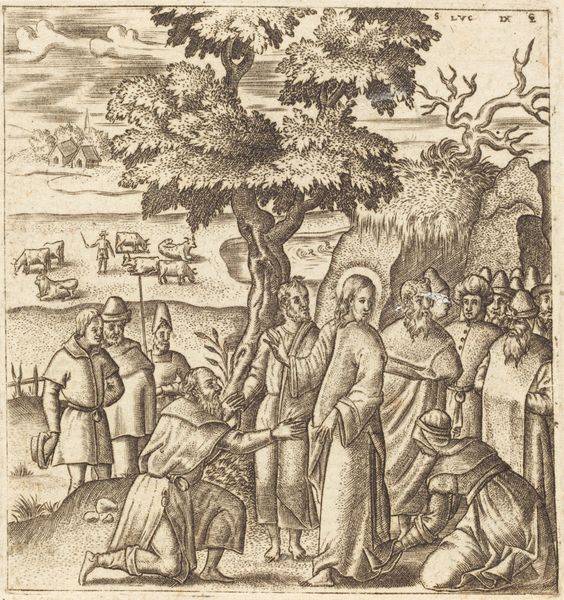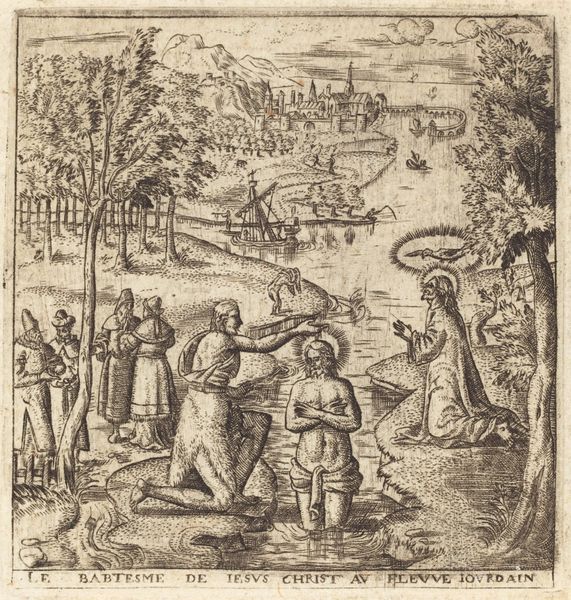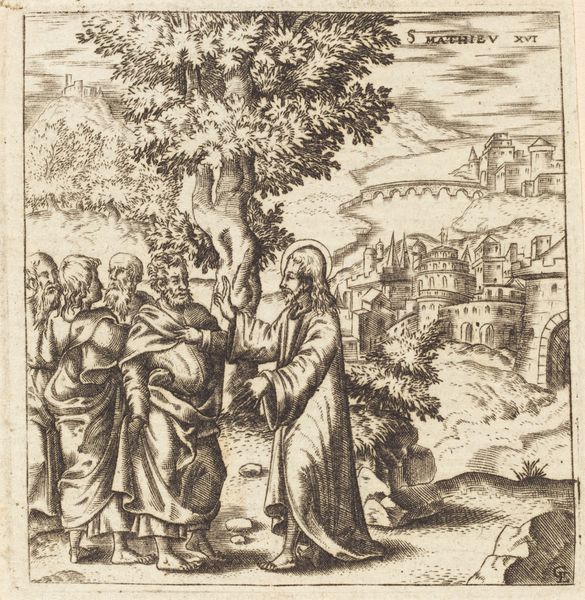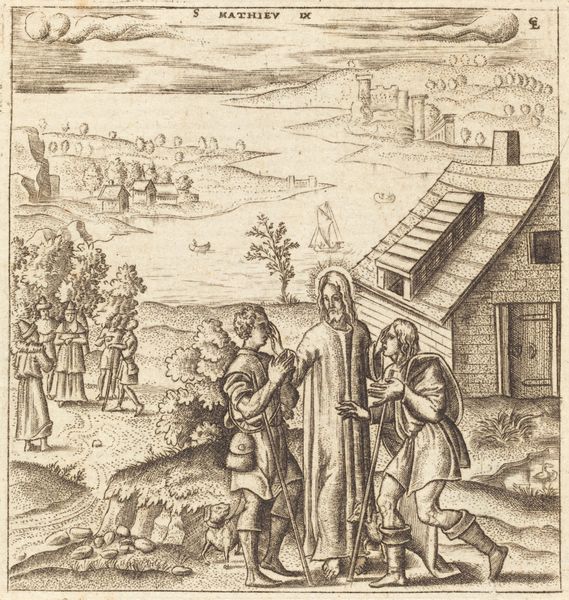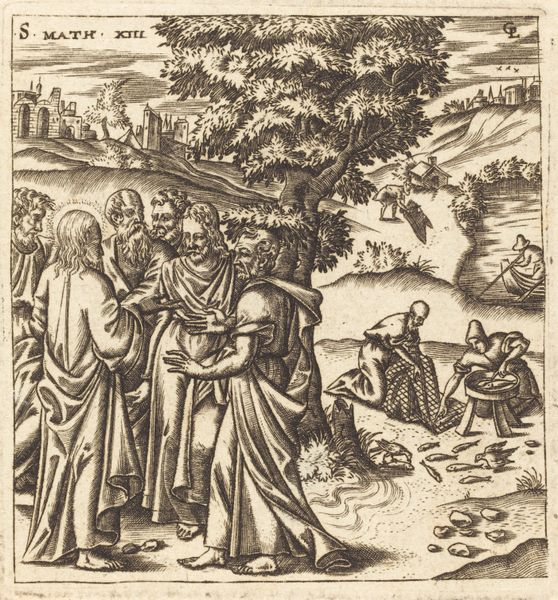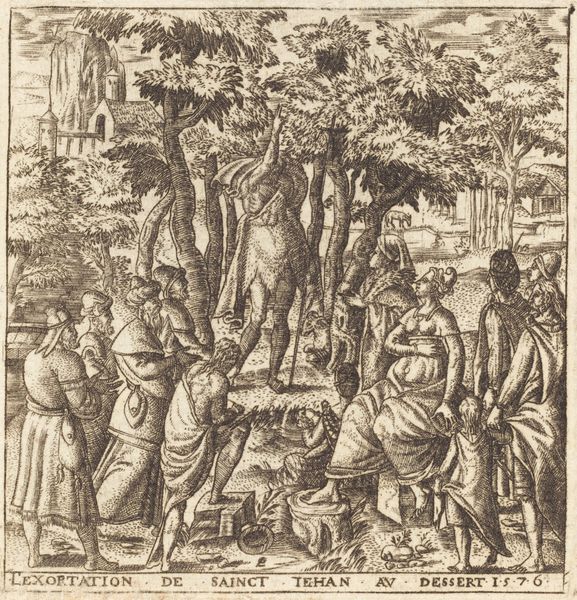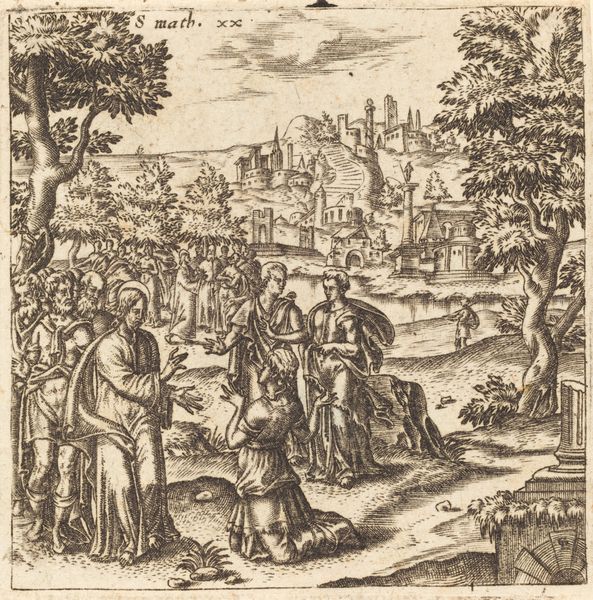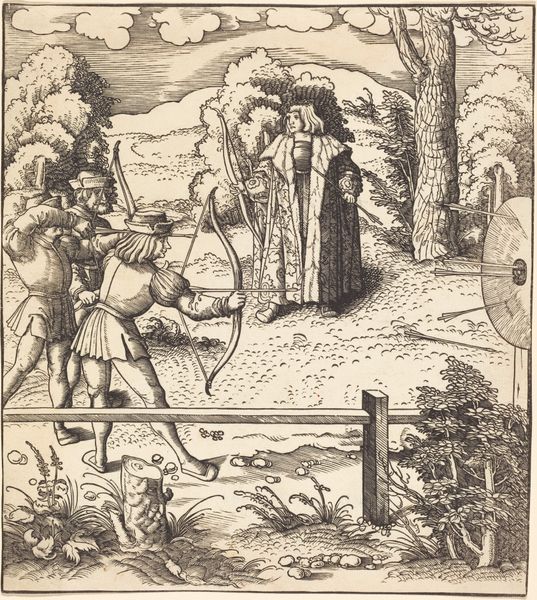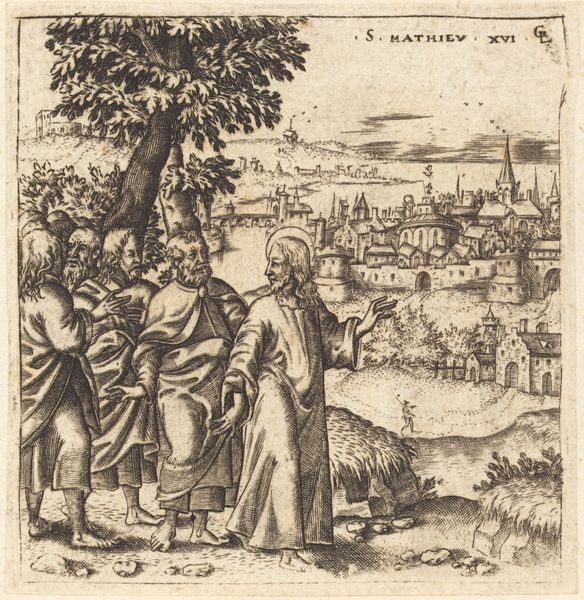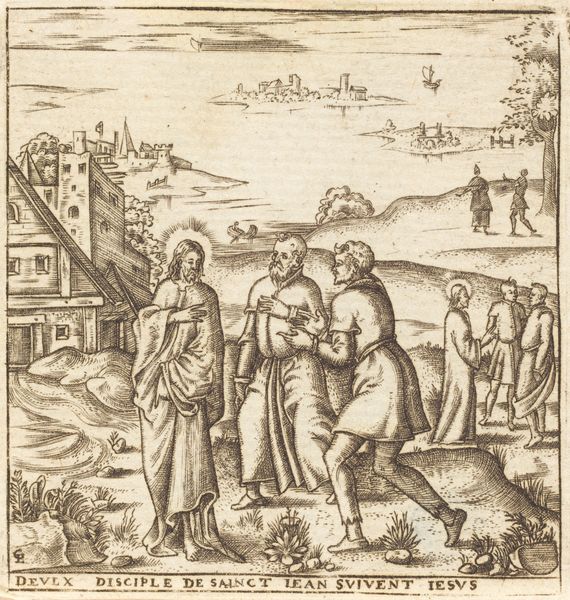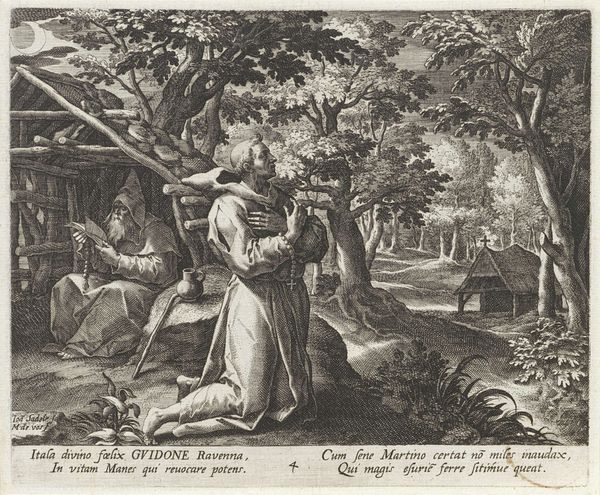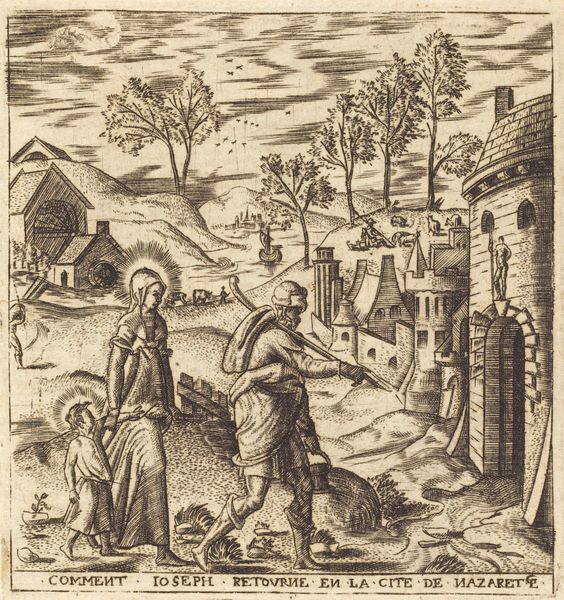
print, engraving
# print
#
landscape
#
figuration
#
history-painting
#
northern-renaissance
#
engraving
Copyright: National Gallery of Art: CC0 1.0
Curator: Before us, we have Léonard Gaultier’s engraving, “The Testimony of John,” created circa 1576 to 1580. It's quite the detailed landscape. Editor: My initial impression is one of starkness, a carefully etched scene with almost a sense of theatrical staging despite its narrative purpose. Curator: Indeed. Notice how Gaultier uses precise hatching to define forms, building tonal depth that structures the visual plane. The strategic use of line weight guides the viewer’s eye, a key aspect of Renaissance printmaking. Editor: It strikes me how the process itself, engraving, dictates so much of the aesthetic. The labor intensiveness of carving those lines into the metal plate is so palpable; it lends a certain seriousness and permanence. It’s also a deliberate contrast of dark and light which affects meaning itself. Curator: Precisely. Semiotically, light represents divine revelation in Renaissance art. Gaultier contrasts the lighter figures, such as John the Baptist, against a darker backdrop. Consider the relationship between form and content; the texture of the engraved line reinforces the somber narrative tone. Editor: And it's a commercial process. Engravings like these made religious narratives accessible. Think about who was buying them and putting them on walls! It reveals how images reinforced authority. How much influence does print-making have on popular imagination here? Curator: Ah, certainly. Print-making had a vital impact on popular imagination, democratizing and expanding visual language to wider audiences. The symbolism becomes internalized through constant viewing. The structure helps to frame an emotional reaction too, and vice versa. Editor: You know, looking at it this way helps me understand the way that images work; not just what the engraver chose to include, but why they made it the way they did, reveals how meaning works within a culture. Curator: A beautiful encapsulation. Through our combined perspectives, we have seen how artistic form and production contextualize meaning within a time.
Comments
No comments
Be the first to comment and join the conversation on the ultimate creative platform.
